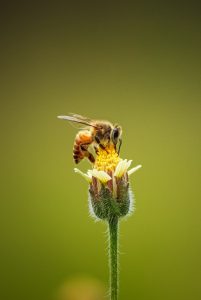Honeybees are not endangered in the United States. Never mind whatever you’ve read or seen online. As of September 2023, honey bees are not in peril or at risk of extinction. U.S. wildlife officials have never considered honeybees endangered or threatened, and they’ve never been listed under the ESA.
According to the officials ”It is estimated that there are more honey bees on the planet now than at any time in human history.

Which Bees are at Risk of Extinction?
Native bees not honeybees are the endangered bees which are at risk of extinction. Most of the native bees are solitary and nest in the ground. Most don’t have queens. They don’t do dances to find honey. And none of them produce the kind of honey we eat. See some of the endangered bees below;
- Rusty Patched Bumble Bee (Bombus affinis): Once common in the eastern and midwestern United States, this species is now listed as endangered by the USFWS.
- Franklin’s Bumble Bee (Bombus franklini): This species is critically endangered and may even be extinct. Its range was limited to a small area straddling Oregon and California.
- Yellow-Banded Bumble Bee (Bombus terricola): This species has suffered a major decline across its range in the U.S. and Canada.
- Hawaiian Yellow-Faced Bees (Hylaeus spp.): Several species of yellow-faced bees native to Hawaii have been listed as endangered by the USFWS.
- The Miami Blue Butterfly (Cyclargus thomasi bethunebakeri), although not a bee, is an important pollinator that is also considered endangered.
What Will Happen If Honeybees Go Extinct?
Honeybees are responsible for about 80% of the world’s pollination. If they die or go extinct, plants that rely on pollinators would no longer be able to survive. This will lead to a massive change in several ecosystems. This means animals that feed on bees lose their food source, and plants that need pollination to survive will die out.
ANSWER
Honeybees are not endangered in the US as of September 2023. However, there are other bee species (not honeybees) that are listed as “endangered” under the Endangered Species Act.
